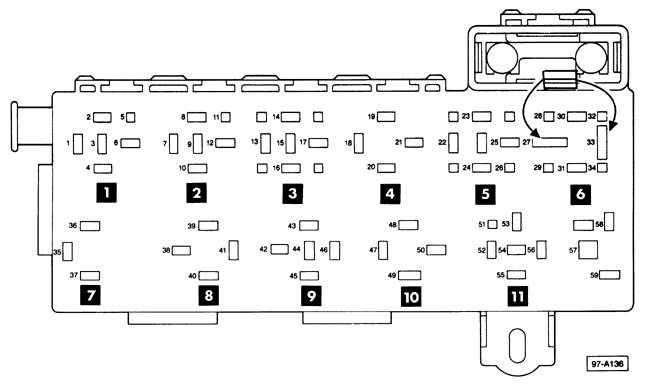Operating Fuel Pump For TestUnless the fuel pump relay receives an rpm signal from the ignition system indicating that the engine is running, the fuel pump will operate for only a few seconds when the ignition is on. To power the fuel pump for testing without the engine running, the relay must be bypassed. To bypass the fuel pump relay, remove it and substitute a remote switch, such as Volkswagen special tool no. US 4480/3 (order no. TU4 480 003 25 ZEL), or a jumper wire between two sockets on the fuse/relay panel. The correct sockets are the two largest ones located perpendicular to each other and corresponding to relay terminals 30 (battery voltage) and 87 (output to fuel pumps). Fig. 4-2 shows the typical locations of these terminals. The sockets are also identified on the relay panel itself. On 1985-1989 Golf and GTI models, they are sockets 27 and 33. On Jetta models from 1985 to January 1989, they are sockets 2 and 3. On Jetta models from January 1989, and on Golf and GTI models beginning 1990, they are sockets 4 and 6. For information on relay location and terminal identification for a particular model, see ELECTRICAL SYSTEM.
With the ignition off and the fuel pump relay removed, use the jumper (toggle switch off) to bridge the sockets in the fuse/relay panel. Turn on the toggle switch to operate the fuel pump. If the fuel pump does not run except when the jumper is connected, the relay or relay wiring is faulty. If the pump does not run with the jumper in place of the relay, the fault could be in the fuel pump or the electrical wiring to the fuel pump. For more fuel pump electrical testing, see Fuel Pump Electrical Tests.

|